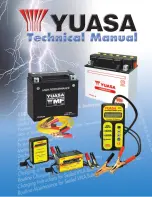
F
WMurphy has been in the
business of providing
quality controls to the engine,
pump, and compressor market
since 1939. Most of the controls
in use today were pioneered by
Murphy to meet the needs
expressed by OEM’s, packagers
and users. As we move into a
renewed era of environmentally
clean burning Alternative Fuels,
with Compressed Natural Gas
(CNG) leading the way, Murphy
again is out in front with new
control systems. This fast growing
market requires combining the
best of our proven controls with
the innovative SELECTRONIC
®
Micro-Controller™ units. Murphy
engineers are able to provide well
designed systems to meet your
exacting needs.
Our LEVELS I, II, and III control
systems have been engineered to
cover a wide variety of
requirements from simple
start/stop operation of the
compressor and driver to
complete station automation with
remote communication
capabilities. Should these standard
systems or options not cover your
system requirements, these
controllers have the capability to
be expanded or engineered to
meet your needs.
We understand your
requirements, we listen to your
concerns, and most importantly,
we respond. Murphy controls are
known and accepted world-wide,
and they are backed by our
limited 2 year warranty.
All Murphy controls are
designed to live in the harsh
environment of motors,
engines and compressors.
They’re tough for tough
applications.
These systems are
designed and built in accordance
with NFPA 52 and NFPA 37
guidelines to meet the area
classification requirements as
defined by the National
Electric Code.
Whether you are upgrading
existing equipment or specifying a
new installation, give your
equipment the Murphy
Advantage. You will add value to
your equipment and gain
increased customer satisfaction.
Specify Murphy LEVEL I, II, or III
SELECTRONIC
®
control systems
for your Alternative Fuels Fueling
Station control requirements.
Continuing a Tradition
1
We understand your
requirements, we listen to
your concerns, and most
importantly, we respond.
NOTE:
The features shown for LEVELS I, II, and III are typical for intended applications. Exact configuration and availability of
features may depend upon final system requirements.

























